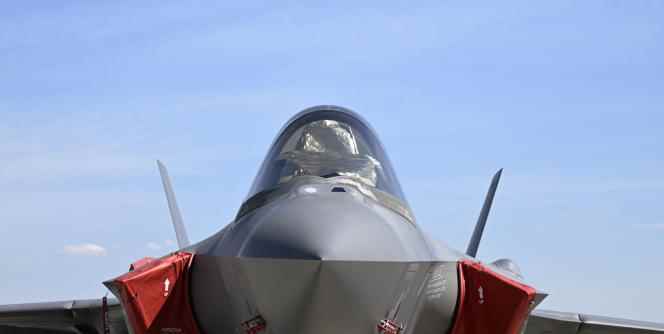Ten months after Chancellor Olaf Scholz announced a “special fund” of 100 billion euros intended to modernize the German army, the budget committee of the Bundestag gave the green light, Wednesday, December 14, to the first purchases financed thanks to this exceptional envelope.
The main decision concerns the acquisition, for 9.9 billion euros, of thirty-five F-35A Lightning II aircraft, the fifth-generation stealth fighter-bomber from the American manufacturer Lockheed Martin. Intended to partially replace the old fleet of Tornado used since the beginning of the 1980s, these F-35s – whose purchase, announced in March, was badly perceived by France which had seen in it a mark of Berlin’s disinterest in the project of the future air combat system (SCAF) – will be delivered to the Bundeswehr between 2026 and 2029.
Approved to carry American bombs, the F-35s will enable Germany to meet its commitment to “nuclear involvement” within NATO. “The German-American defense partnership has never been stronger and is a key pillar of NATO’s transatlantic partnership”welcomed the US Embassy in Germany in a statement.
On Wednesday, the Bundestag’s Budget Committee also approved the purchase of 20,000 digital transmission devices (1.4 billion euros), 140 snow removal vehicles (552 million euros) and 120,000 guns. assault, intended to replace the G36 used by the Bundeswehr since 1995 (273 million euros). Finally, it released a billion euros for the Pumas, these armored infantry fighting vehicles, of which the Minister of Defence, Christine Lambrecht, had deplored from the rostrum of the Bundestag in April that more than half were in breakdown.
“Annoying vis-à-vis our allies”
In total, the investments approved by MEPs amount to approximately EUR 13 billion, which represents just over a tenth of the “special fund” and which will not allow Germany to reach, in 2023, the objective set by NATO for its members to devote 2% of their GDP to their military expenditure. Yet such was Olaf Scholz’s commitment. “We will from now on, from year to year, invest more than 2% of our GDP in our defense”he declared to the Bundestag on 27 February.
According to a report by the German Economic Institute (IW, Cologne), published on 5th December, Germany should spend just over 1.5% of its GDP on defense in 2023, i.e. roughly as much than in 2022. As for the 2% objective, it should only be achieved in 2024 and 2025. From 2026, on the other hand, the share of military expenditure should fall back to 1.8% of GDP then to 1 .2% in 2027.
You have 51.25% of this article left to read. The following is for subscribers only.
